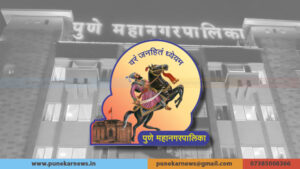Pune: mRNA is helpful to prepare COVID19 vaccines says Dr Swarnalata Saraf

Pune, May 13, 2020: “Conventional vaccine approaches have not been as effective against rapidly evolving pathogens like influenza or emerging disease threats such as the COVID19. RNA based vaccines could have an impact in these areas due to their shorter manufacturing times and greater effectiveness”, said Dr Swarnalata Saraf, Director, Department of Pharmaceutical Sciences, Pt Ravishankar Shukla University, Raipur, Chhattisgarh.
She was speaking in a webinar on the topic ‘Strategies for mRNA Vaccine Production’ held on Tuesday,12th May 2020. It was organized by MCE Society’s Allana College of Pharmacy, Azam Campus, Pune. Dr Saraf first spoke on the immune system which provides the first-line defence against infection. She explained about mRNA biology which includes synthesis of protein: Transcription and translation. She also explained how mRNA translation helps to generate amino acids and proteins and how m RNA is helpful to prepare COVID19 vaccines.
She spoke about different types of vaccines such as first-generation, second-generation, toxoid vaccines, protein subunit, DNA vaccine, RNA vaccines etc. She explained about SARS-Cov-2: COVID 19 biology and how it affects the human body. She also told about the therapy which includes vaccination and plasma therapy. She also includes the role of antibodies in the treatment of COVID 19.
Dr Saraf said,” Unlike a normal vaccine, RNA vaccines work by introducing an mRNA sequence which is coded for a disease-specific antigen, once produced within the body, the antigen is recognised by the immune system, preparing it to fight the real thing. RNA vaccines are faster and cheaper to produce than traditional vaccines, and an RNA based vaccine is also safer for the patient, as they are not produced using infectious elements. Production of RNA vaccines is laboratory-based, and the process could be standardised and scaled, allowing quick responses to large outbreaks and epidemics.”
Dr Kanchan Chauhan, Dr Rani Potawale, Mrs Amruta Yadav and Mr Rajat Sayyed coordinated the webinars under the convenership of Dr Kiran Sanjay Bhise, Principal, Allana College of Pharmacy, Pune, coordinated the webinar.
What are RNA vaccines and how do they work?
Dr Saraf also said, “Conventional vaccines usually contain inactivated disease-causing organisms or proteins made by the pathogen (antigens), which work by mimicking the infectious agent. They stimulate the body’s immune response, so it is primed to respond more rapidly and effectively if exposed to the infectious agent in the future.
RNA vaccines use a different approach that takes advantage of the process that cells use to make proteins: cells use DNA as the template to make messenger RNA (mRNA) molecules, which are then translated to build proteins. An RNA vaccine consists of an mRNA strand that codes for a disease-specific antigen. Once the mRNA strand in the vaccine is inside the body’s cells, the cells use the genetic information to produce the antigen. This antigen is then displayed on the cell surface, where it is recognised by the immune.
A major advantage of RNA vaccines is that RNA can be produced in the laboratory from a DNA template using readily available materials, less expensively and faster than conventional vaccine production, which can require the use of chicken eggs or other mammalian cells, Dr Saraf concluded.





